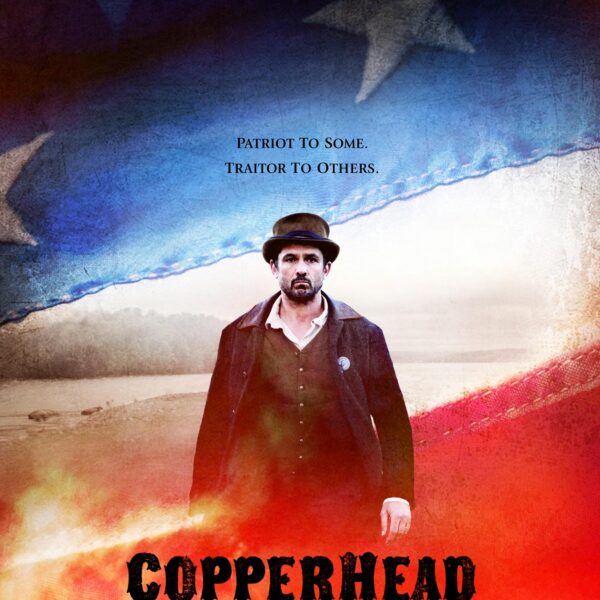Slaughter at the Chapel: The Battle of Ezra Church, 1864 by Gary Ecelbarger. University of Oklahoma Press, 2016. Cloth, ISBN: 978-0-8061-5499-2. $26.95.
 The Atlanta Campaign’s significance to the Union’s triumph in the Civil War has never been denied. William T. Sherman’s victory in Georgia secured Abraham Lincoln’s reelection in 1864 and, with it, guaranteed that the war would be prosecuted to its bitter end. Despite its long understood importance, for decades the campaign largely failed to attract the probing examination of historians. Finally, beginning in the 1990s, foundational studies by Albert Castel and Richard McMurry emerged to chronicle this pivotal chapter in the war’s narrative. In more recent years, other scholars have picked up the torch to provide studies of specific battles and facets of the campaign. Gary Ecelbarger’s Slaughter at the Chapel: The Battle of Ezra Church is an excellent tactical study of one of the Atlanta Campaign’s most significant engagements.
The Atlanta Campaign’s significance to the Union’s triumph in the Civil War has never been denied. William T. Sherman’s victory in Georgia secured Abraham Lincoln’s reelection in 1864 and, with it, guaranteed that the war would be prosecuted to its bitter end. Despite its long understood importance, for decades the campaign largely failed to attract the probing examination of historians. Finally, beginning in the 1990s, foundational studies by Albert Castel and Richard McMurry emerged to chronicle this pivotal chapter in the war’s narrative. In more recent years, other scholars have picked up the torch to provide studies of specific battles and facets of the campaign. Gary Ecelbarger’s Slaughter at the Chapel: The Battle of Ezra Church is an excellent tactical study of one of the Atlanta Campaign’s most significant engagements.
The battle came to fruition because of Confederate commander John Bell Hood’s attempt to stymie Sherman’s efforts to cut the last remaining rail line supplying the besieged rebels in Atlanta. The Confederate attacks were delayed, uncoordinated, and ultimately unsuccessful; the Union’s victory at Ezra Church was a landslide. The quality of Ecelbarger’s narrative and analysis will come as no surprise to those who have read his The Day Dixie Died: The Battle of Atlanta. Continuing the pattern he began in that book, Ecelbarger provides readers with superb contextualization, cogent evaluations of officers, and an effective encapsulation of the fog of war that loomed especially thick over the Ezra Church battlefield.
As Ecelbarger shows, the historian faces many difficulties when attempting to accurately chronicle this battle. First, as with many engagements, there is a dearth of surviving records from the Confederate side. Second, because Union officers treated Ezra Church as one part of a larger operation, northern sources are also lacking. Lastly, Atlanta’s inexorable urban sprawl precludes modern scholars from analyzing the terrain in tandem with historical sources. Once the available evidence is sifted through, Ecelbarger claims that, more so than terrain, Union numerical superiority, or disparities in quantity and quality of weapons, leadership explains the battle’s results. (Readers looking for another scholarly examination of the battle that reaches some different conclusions should consult Earl J. Hess’s superb The Battle of Ezra Church and the Struggle for Atlanta).
Sherman and Hood, despite their significance, exist largely on the book’s margins. Eclebarger’s evaluations of the two commanders are moderate and fair. Sherman, he argues, failed to recognize the strengths of some of his highest-ranking subordinates. This was especially true of John “Black Jack” Logan, who was in temporary command of the Army of the Tennessee on the eve of battle. Instead of maintaining Logan’s command, Sherman transferred Oliver O. Howard from a different force to take permanent charge of the army. Logan served as a corps commander during Ezra Church and, as Ecelbarger argues, provided steely leadership that proved central to the Union’s victory. The author’s evaluation of Howard is more difficult to discern. Despite his command of the field, Howard is largely absent from Ecelbarger’s evaluation of generalship in his concluding analysis.
The author’s assessment of Hood is more damning. The rebel general’s plans for Ezra Church (as for other engagements involving the Army of Tennessee) failed to consider the army’s limitations. When the battle began, Hood opted to remain at his headquarters, relying on, as Ecelbarger shows, inexplicably slow and inefficient couriers for information. The general’s information was consistently obsolete. Moreover, he sent into battle Stephen D. Lee and Alexander P. Stewart, two generals equal in rank, without explicitly charging one of them with command of the field. Perhaps most significantly, it was Hood’s decisions that led to Lee’s initial assault being delayed; by the time it got under way, the Yankees were in possession of the high ground around Ezra Church.
As others have argued, the Battle of Ezra Church destroyed the morale of Hood’s army. Ecelbarger agrees with this contention, positing that while earlier engagements “went a long way to take the Confederate soldier out of the fight, the Battle of Ezra Church took the fight out of that soldier” (208). However, the author spills little ink analyzing or chronicling the battle’s effects on Confederate morale. While this omission detracts from the conclusion of Ecelbarger’s narrative, it does not run counter to his stated goals of providing an accurate narrative of the battle and evaluation of its participants.
The Atlanta Campaign has experienced a sort of renaissance in recent Civil War literature. Earl J. Hess, William Link, Stephen Davis, Wendy Venet, Russell S. Bonds and others have examined various aspects of 1864 operations in north Georgia. In earlier works, and in Slaughter at the Chapel, Ecelbarger joins the ranks of these scholars further illuminating one of the war’s most significant campaigns.
Robert L. Glaze teaches history at the University of Tennessee, Knoxville.




